Neo-Westerns: Conquering The New Frontier
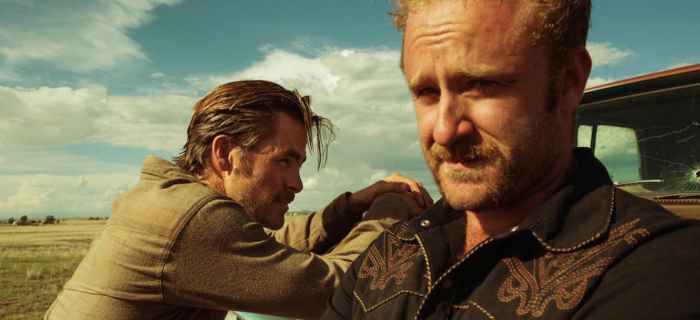
“Ought to let it just turn me to ashes, put me out of my misery. 21st century, I’m racing a fire to the river with a herd of cattle. And I wonder why my kids won’t do this shit for a living.”
A quote that not only encapsulates a film, but also a genre. Neo-westerns are not necessarily a new concept, with the genre initially fledgling as an intrigue in 1976 with the release of John Carpenter’s Assault on Precinct 13. The film’s drawn-out portraits and archetypal figures paid homage to the classic westerns of yesteryear, while introducing an update for the hyper-violent exploitation crowd of the 1970s. This master-class in tension perfectly showed the transition from classic to modern, even with its visual colour palette. So why is it that, with a cult classic such as this, people are only just starting to hear the term Neo-Western used in the film landscape? There are several films that have played a role in developing the genre and introducing it into the public ethos.
Before we take a look at these films, let’s get a grip of what qualifies them to be Neo-Westerns. Neo-Westerns, or contemporary westerns, are westerns set in the time close to or exactly when the film is released. While that might seem quite basic and uninspired, it’s worth noting that the common recurring theme is a loss of identity and the encroaching sense of modernity leaving the American Old West behind. As the quote above displays, the frontiersman lifestyle is no longer efficient or effective for anyone, and everyone is forced to update eventually to avoid a life of misery. While they may be littered with references and archetypes of the genre, the films often choose to flip these on their heads to make a more wholly compelling work.
I won’t go as far to say that Neo-Westerns introduced complex characters and moral ambiguity in decisions to westerns, since this was a common staple in some of the best classic westerns, such as Once Upon a Time in the West and The Searchers; they have, however, surely introduced the question how resilient and long-lasting the psyche of a traditionalist westerner is.
Hell or High Water
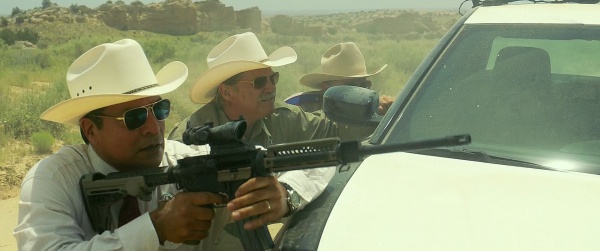
As the film on this list with the highest critical consensus, Hell or High Water has arguably perfected the craft of the Neo-Western. Following two brothers (played impeccably by the controlled Chris Pine and the volatile Oscar-worthy Ben Foster) on a bank-robbing spree to raise money for their mother’s ranch, which was wrongfully acquired by the banks in question. In pursuit are two Texas rangers (a career-best Jeff Bridges and an always-great Gil Birmingham), who are hot on the job when the FBI refuses. Out of all the things that make Hell or High Water a great western (morally ambiguous characters, great landscapes, a pilgrimage of moral enlightenment etc.), there’s only one aspect that makes it a perfect Neo-Western: the sense of change. Throughout the film, we are constantly reminded that this new world is unapologetic, and turns away all that was great about the rich heritage of the classic American life. Great, however, is subjective, and these characters are unwilling to accept that the world has altered around them while they’re just standing still.
Taylor Sheridan, the writer of Hell or High Water and the actor who delivered the above quote, has crafted a perfect loose trilogy of Neo-Westerns: Sicario, Hell or High Water and the recent Wind River. In an interview, he said, “As an outsider, to come into an uncluttered landscape [like West Texas], felt very beautiful to me and my DP, Giles Nuttgens. We’ve worked on five films that I’ve done. For us it’s a beautiful place, and for some people in America, they would think it’s normal and slightly depressing.” Sheridan perfectly highlights the American psyche beyond the old west, of how these traditionalists are either savages and senile unwilling to adapt to a possibly technological utopia, or a beautiful slice of history outside of time itself. To the Americans living in this world, life gets pretty boring when you’re just seen as a minority subject.
Nevertheless, Hell or High Water asserts itself as a Western for the ages with its assured tension and warm visual splendour that both invites and deters.
No Country for Old Men
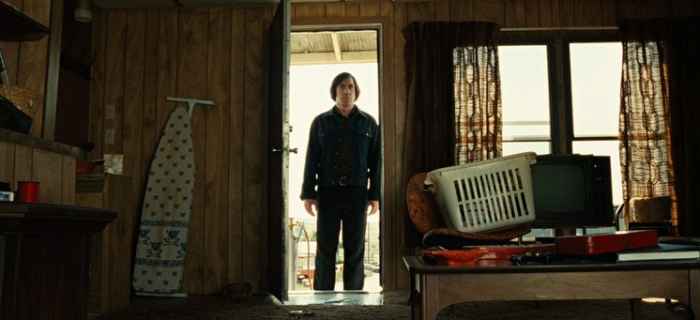
No Country for Old Men is a compelling blend of both the western and the noir, which introduced the concept of a Neo-Western to the general public. The classic characters are all there – the outlaw, the lawman and the heroic gunslinger. At least that’s what it seems like at first glance. The best part about this particular film is how it takes everything we know and love about Westerns and give us a harrowing look what happens to the order of the American frontier when an outlaw’s motivations aren’t clear as black and white. Not just a great Neo-Western, but an amazing Revisionist Western and a grounded horror western, all due to the character of Anton Chigurh (in an Oscar-winning turn from Javier Bardem). No Country for Old Men makes us revise the classic “Cowboys vs Indians” narrative by introducing a new foreign presence hellbent on destroying all that’s amazing about the Land of the Free.
The hero, Sheriff Bell, is a classic soon-to-retire Texan lawman, stuck in the old way of life and rigid in his unwillingness to move forward with the times. Sheriff Bell is almost nihilistic, not just with his own life, but with the world around him. His life loses all meaning when he is no longer able to take down. The central character, Llewelyn Moss, decides to try to tip life’s odds in his favour, but this has a huge negative impact on him later on. Whereas classic westerns have the lawbreakers as bank-robbing champions, oozing sex appeal and fighting against the man, this film instead acts as a deterrent to breaking the law, knowing that the system does not reward unlawfulness in the modern age. No Country for Old Men may be remembered primarily for the performance of its villain, but the harsh and all-too-familiar world around him sets the stage for a thrilling all-American epic.
Sicario
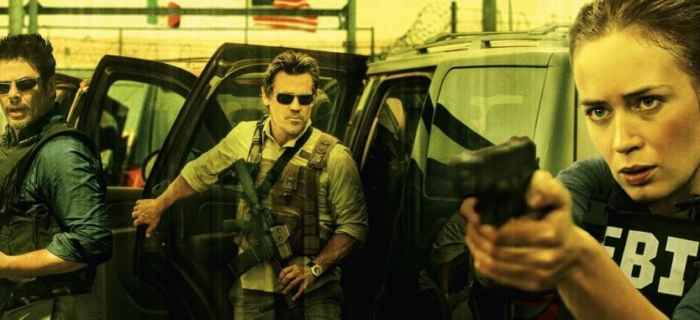
While not as traditional a choice as the aforementioned films, Sicario still has some unmistakable western homages that can’t be ignored. The morally grey villains, the shaky and unready protagonist forced into a new environment and the harsh, unforgiving landscape are all intricate cogs of a well-crafted western laced with eclectic features. This film is where the word “frontier” truly comes into focus, as the border between the US and Mexico plays as the main focus and setting of the film. Sicario roots itself firmly in the thriller genre, although Taylor Sheridan’s recognisable Texan touch is noticeable throughout.
Sicario introduces the drug war between Mexican Cartels and US government forces, which is a situation that wasn’t able to be drawn on in classic westerns. As a Neo-Western, the film is hyper-violent and incredibly tense, which is where the film has its thriller elements. Character motivation is a driving force in this film, and it calls into the question the actions of the US against another nation – which wasn’t explored in classic westerns. With the upcoming sequel Soldado set to reunite Benicio Del Toro and Josh Brolin for another desert-soaked elimination mission, Sheridan is set to cement himself as the man who crafted the Neo-Western genre.
Wind River
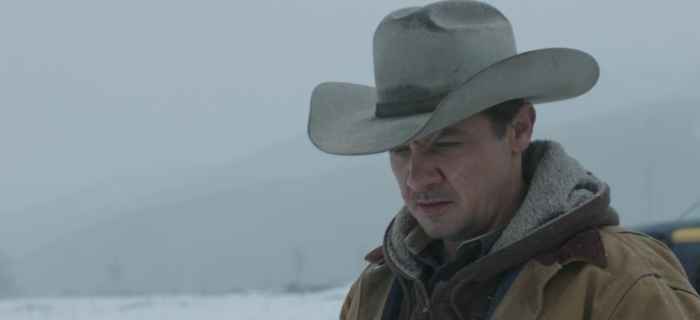
The conclusion to Sheridan’s trilogy, Wind River moves away from the desert landscape featured in most westerns to the eponymous Indian reservation in snowy Alaska. A rare sub-genre known as a Northwestern, Wind River also functions as an effective Neo-Western with its skill and intensity. The film, more than No Country for Old Men, adapts the Cowboys and Indians narrative to show a true outsider tale and a the effects of a modern world where the fear of extermination and pillaging still lingers for the poor native souls just trying to live their lives.
The titular environment is just as, if not more, harsh as the classic Texan westerns featured on this list, and calls to mind the effective psychological thriller Insomnia by Erik Skjoldbjærg. This film is the clearest reminder of the true scope of Neo-Westerns, appealing to many bases. Jeremy Renner and Elizabeth Olsen fit perfectly in a resilient cast that effectively bring the fully-realised setting to life. Wind River shows that the Neo-Western genre is here to stay and stay on top.
What do you think? Leave a comment.











There are few Westerns being made today and I love them all.
Most of the westerns shot recently were runaway productions (made in Canada).
Magnificent 7 is a very, very good movie. If you like Westerns, you will definitely like it. Denzel is great.
Agreed. Good fun film.
The message of the original and the seven samurai has been abandoned, though.
You had me at “Denzel.”
Sorry, but much as I like Hell or High Water: if there are cars in a movie, it isn’t a western.
That’s just not true: Bring me the Head of Alfredo Garcia, The Wild Bunch are both fine films. Even Easyrider can be seen as part of the Western genre,
I agree with you in principle; The Old West was a historical period which largely coincided with the American Frontier which closed between 1890 and 1914 (depending on what geographical areas you include) as free land disappeared.
Anything set outside that period generally should not be considered a Western.
That’s the old school right there. Break + new + ground.
Once Upon A Time in the West is my favorite western and one of my favorite movies of all time.
I can never decide between Once Upon a Time in the West, or The Good, the Bad and the Ugly. At the moment I think probably the latter (it’s cooler), but there’s a strong case for both.
Also worth noting is that Once Upon a Time in the West was part of Sergio Leone’s Once Upon a Time trilogy. Once Upon a Time in America (an epic NYC gangster film) was his break from spaghetti westerns but then the studio asked him to make another Western: Once Upon a Time in the West. Lastly he made Duck! You Sucker, yet another Western, set on the cusp of the fading of cinema’s classic American/Mexican West (as was Butch Cassidy and the Sundance Kid).
I wonder whether we shouldn’t be a little worried by the Western revival. It seems to me as though the Western died in the 60s because the 60s was a forward looking, optimistic era: the Western is inherently nostalgic and conservative.
Perhaps I’m inherently nostalgic and conservative but many embodied worthwhile values though. IMO every school curriculum should include –
Shane – for its lessons on bullying.
High Noon – to illustrate the importance of civic responsibility *
The Magnificent Seven – that the strong should help others.
(* and because Grace Kelly was mighty purty obviously).
The Western didn’t die in the 60’s. It flourished. Westerns were all over American television in the 1960’s. The frontier theme of Westerns went well with the Kennedy “New Frontier” ideology and “can do” spirit. Westerns are optimistic. The 1970’s and it doom-and-gloom pessimism killed Westerns.
Agreed. “Star Trek” was killed off so a producer’s wife could watch “Gunsmoke” in that time slot. “Bonanza”, “The Big Valley”, “The Virginian”… these shows all ran in to the early seventies. The replacements for them were “Little House on the Prairie” and “Grizzly Adams” which eschewed the Western ethos.
This is a really interesting article, highlighting some amazing films many of which have been underrated.
Makes you proud to be British, these Westerns just show what an amazing film industry and history we have
Loved watching Westerns with my Dad when I was a kid. Plus – The Bonanza, High Chapparal, F-Troop. Halcyon days.
Loving Westworld although clearly a cross-genre show.
Not a huge fan of westerns but it IS a fascinating part of modern history. The story of the creation of a modern empire, the most powerful and dynamic nation on earth, and one that is heavily flawed but also prone to unprecedented change.
Did you not seen the 70s film that influenced The Terminator?
Americans won’t truly know the brutality of the American west until some gutsy producer brings Blood Meridian – Cormac McCarthy’s brilliant epic of a young man surviving the depravities of the southwest’s Indian wars – to the screen.
Read the book. If you can.
I’d like to see a similar treatment of the wars between the settlers of Australia and the aborigines.
The truth should be told.
David Milch lampshaded the reason for the enduring fascination of the Western in one of the first scenes of Deadwood, when a character calls it a town with no law. Nearly every important Western is about the precariousness or nonexistence of public order; how it is established or how it is lost, and how people survive or reveal themselves in its absence. A Western hero is someone who establishes order, and with it, justice. Even The Wild Bunch follows this ethos. The bunch kills the evil general and most of his army, and the surviving outlaws join up with the virtuous rebels.
Elmore Leonard started out on Westerns, and wrote the stories for two 50’s classics, 3:10 To Yuma and The Tall T, before he started writing crime fiction, and the carryover into his crime fiction is apparent. His City Primeval is subtitled High Noon In Detroit.
It also explains the enduring story of Wyatt Earp. The first movie about him appeared just three years after his death, and has some pretty interesting names in the credits.
I liked the more recent adaptation of True Grit. But – though it’s set no further west than West Virginia – I still think Matewan is a great Western in terms of genre.
Not a film, but Red Dead Redemption!
Also, AMC’s Hell On Wheels Was phenomenal.
The Western = certainty, Noir = uncertainty. Interesting that they peaked around the same time.
Wind River is set in the Wind River reservation in Wyoming. It’s solid western territory. It’s more of a darker, updated look at “cowboys and indians”
I like this term “Neo-Western.” A good essay with a good perspective.
I like this term too, it really encapulates the feel and could in fact be applied to films that pick up the genre but develop it in a unique manner.
Captioning your images would be really helpful for those who have not seen the films (e.g., stating who is in the images).
Sicario is definitely a sign that the genre is set for revival. Especially, with the current political climate in the region. And, the sequel Soldado is no doubt a confirmation of the trend. Good to see an article paying homage to the original and sounding the bugle for the new (old) wave.
I liked your article as I’m very interested in the emergence and evolution of the Neo-Western, however there were a few points I’d like to question:
– You refer to Llewelyn Moss as “the heroic gunslinger” character type however I feel there isn’t a lot which is ‘heroic’ about him, given that he steals money (albeit from a drug-deal shootout) and runs from danger whenever it arises.
– It is mentioned that “classic westerns have the lawbreakers as bank-robbing champions, oozing sex appeal” however this seems to be too much of a generalisation; I’m not sure the careers and casting of Lee van Cleef (The Good, The Bad and The Ugly), Emilio Fernández (The Wild Bunch) or Ian McDonald (High Noon) were a result of their oozing sex appeal.
– You claim that No Country For Old Men “acts as a deterrent to breaking the law” – whilst this might be true for Moss, Chigurh’s regular committing of crimes and no comeuppance suggest otherwise.
Just watched Rover, which was another excellent Neo-Western that many people overlooked. The dusty Australian background is an amazing setting.